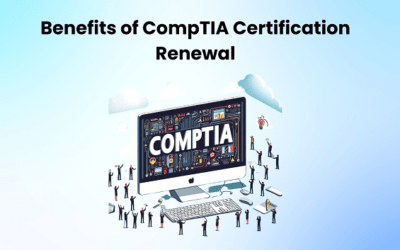Inside the sphere of extremity the board, the Episode Order Framework( ICS) expects a critical job in coordinating and supervising circumstances with delicacy. The ICS draws its strength and efficacity from the underpinning principles of the National Incident Management System( NIMS), recapitulating 14 operation characteristics. These attributes form the bedrock of the ICS, contributing mainly to its adaptability and functional effectiveness. In the posterior converse, we claw into the complications of each of these characteristics, unraveling their profound significance in the sphere of incident operation.
1. Common Terminology
The foremost operation particularity within NIMS involves the establishment of a wordbook characterized by terminology. This serves to harmonize the sweats of different incident operation and support associations seamlessly. The uniformity extends to organizational functionalities, resource delineations, and incident installations. The objectification of standardized language not only enhances communication but also reduces the threat of confusion or misapprehension. It fosters a participated appreciation among all stakeholders engaged in incident operation.
2. Modular Organization
The alternate characteristic entails a modular organizational frame. The organizational structure of ICS evolves in a modular fashion contingent upon the scale and intricacy of the incident. The mantle of establishing and expanding the ICS modular association rests with the Incident Commander. As the incident evolves in complexity, functional liabilities are delegated, and the organizational frame expands in tandem. This modular approach bestows rigidity and scalability in managing incidents of different bulks.
3. Management by Objectives
An necessary hand of NIMS is the perpetration of operation by objects. The Incident Commander or Unified Command articulates precise and quantifiable incident objects that steer the course of incident response conditioning. This encompasses the delineation of strategies, tactics, tasks, and conditioning geared towards achieving the quested objects. The attestation of issues pertaining to incident objects imparts simplicity to every member within the ICS association regarding the objects that demand attainment.
4. Incident Action Planning
Guiding the silhouettes of effective incident operation conditioning is the Incident Action Planning. An circumstance exertion Plan( IAP) catches and spreads each- encompassing occasion requirements, targets, methodologies, strategies, and tasks. Its focus extends to addressing the extremities of unborn timeframes or functional ages. The IAP, acclimatized to a specified timeframe, proactively tackles contingencies, outlining incident objects, conditioning, liabilities, coffers, and communication protocols. Be it a minor or intricate incident, the IAP ensures a accompanied response trouble.
5. Manageable Span of Control
The conception of an optimal span of control assumes consummate significance in ICS. It denotes the number of individualities or coffers effectively managed by one administrator during an incident. While the ideal span of control adheres to a rate of one administrator to five inferiors( 15), variations may do grounded on incident type, task complexity, hazards, safety considerations, and distances between labor force and coffers. Upholding an optimal span of control remains imperative for icing safety and responsibility during incident operations.
6. Incident installations and locales
Commensurable with the confines and intricacy of an incident, different orders of support installations may be introduced. These installations encompass the Incident Command Post( ICP), incident bases and camps, Joint Information Centers( JIC), staging areas, and copter spots and helibases. Designated installations furnish the needful structure and coffers for effective incident operation. Prudent establishment and application of these installations contribute mainly to the overall functional effectiveness of incident operation.
7. Comprehensive Resource Management
A vital specific within NIMS is comprehensive resource administration, icing the organized allocation and direction of coffers similar as labor force, brigades, and outfit toward achieving incident objects. Resource administration entails the identification of conditions, the procurement of coffers, monitoring and reporting of status, demilitarization of coffers, and the payment and loss of coffers as necessary. Effective resource administration is imperative for conforming to evolving incident conditions and sustaining response effectiveness.
8. Integrated Dispatches
Integrated dispatches assume a vital part in incident operation, involving the expression and perpetration of a unified dispatches plan alongside interoperable communication processes and systems. These intertwined dispatches uphold connectivity, realize situational mindfulness, and grease the exchange of information among incident operation realities. Voice and data links constitute necessary factors for fostering effective collaboration and collaboration during incident response.
9. Establishment and Transfer of Command
The establishment of unequivocal command functions at the onset of an incident holds critical significance. The primary governance or association vested with responsibility for the incident designates the Incident Commander and delineates the process for the implicit transfer of command. Should the need arise, the transfer of command transpires during the course of an incident, accompanied by a comprehensive briefing to insure the flawless durability of safe and effective operations. easily defined command structures bolster the effectiveness of incident operation.
10. Unified Command
Unified Command is introduced when multiple authorities, agencies, or associations partake in managing an incident. In a Unified Command structure, no singular” Commander” prevails; rather, the incident is overseen through concertedly championed objects. Unified Command facilitates effective collaboration among distant realities without compromising individual agency authority, responsibility, or responsibility. It proves particularly profitable in scripts where no single reality possesses the authority or coffers to manage the incident singly.
11. Chain of Command
The chain of command delineates an orderly line detailing the inflow of authority through the scale of the incident operation association. It empowers the Incident Commander to govern and direct the conduct of all labor force engaged in the incident. While the chain of command does not stymie direct communication between labor force for information sharing purposes, formal direction and control cleave to the established chain of command to insure effective collaboration.
12. Unity of Command
Unity of command guarantees that every individual reports to a singular designated administrator. When assigned to an incident, individualities simply report to their designated Incident Command System( ICS) and admit work assignments solely from their ICS administrator. This principle obviates confusion and fosters clarity in reporting connections during incident response. The operation of concinnity of command transcends all incidents, with the specific command structure subject to variations grounded on incident type and part.
These 12 operation characteristics constitute the underpinning of the National Incident Management System( NIMS), serving as the foundation of effective incident operation. Adherence to these characteristics empowers exigency operation professionals to elevate collaboration, communication, and overall response capabilities. The appreciation and perpetration of these principles are vital in constructing a flexible and effective incident operation system.
Write Whiz
Write Whiz
Write Whiz
Write Whiz
Write Whiz
Write Whiz
Write Whiz
Write Whiz
Write Whiz
Write Whiz
Write Whiz
Write Whiz
Write Whiz
Write Whiz
Write Whiz
Write Whiz
Write Whiz
Write Whiz
Write Whiz
Write Whiz
Write Whiz
Write Whiz
Write Whiz
Write Whiz
Write Whiz
Write Whiz
Write Whiz
Write Whiz
Write Whiz
Write Whiz
Write Whiz
Write Whiz
Write Whiz
Write Whiz
Write Whiz
Write Whiz
Write Whiz
Write Whiz
Write Whiz
Write Whiz
Write Whiz
Write Whiz
Write Whiz
Write Whiz
Write Whiz
Write Whiz
Write Whiz
Write Whiz
Write Whiz
Write Whiz
Write Whiz
Write Whiz
Write Whiz
Write Whiz
Write Whiz
Write Whiz
Write Whiz
Write Whiz
Write Whiz
Write Whiz
Write Whiz
Write Whiz
Write Whiz
Write Whiz
Write Whiz
Write Whiz
Write Whiz
Write Whiz
Write Whiz
Write Whiz
Write Whiz
Write Whiz
Write Whiz
Write Whiz
Write Whiz
Write Whiz
Write Whiz
Write Whiz
Write Whiz
Write Whiz
Write Whiz
Write Whiz
Write Whiz
Write Whiz
Write Whiz
Write Whiz
Write Whiz
Write Whiz
Write Whiz
Write Whiz
Write Whiz
Write Whiz
Write Whiz
Write Whiz
Write Whiz
Write Whiz
Write Whiz
Write Whiz
Write Whiz
Write Whiz
Write Whiz
Write Whiz
Write Whiz
Write Whiz
Write Whiz
Write Whiz
Write Whiz
Write Whiz
Write Whiz
Write Whiz
Write Whiz
Write Whiz
Write Whiz
Write Whiz
Write Whiz
Write Whiz
Write Whiz
Write Whiz
Write Whiz
Write Whiz
Write Whiz
Write Whiz
Write Whiz
Write Whiz
Write Whiz
Write Whiz
Write Whiz
Write Whiz
Write Whiz
Write Whiz
Write Whiz
Write Whiz
Write Whiz
Write Whiz
Write Whiz
Write Whiz
Write Whiz
Write Whiz
Write Whiz
Write Whiz
Write Whiz
Write Whiz
Write Whiz
Write Whiz
Write Whiz
Write Whiz
Write Whiz
Write Whiz
Write Whiz
Write Whiz
Write Whiz
Write Whiz
Write Whiz
Write Whiz
Write Whiz
Write Whiz
Write Whiz
Write Whiz
Write Whiz
Write Whiz
Write Whiz
Write Whiz
Write Whiz
Write Whiz
Write Whiz
Write Whiz
Write Whiz
Write Whiz
Write Whiz
Write Whiz
Write Whiz
Write Whiz
Write Whiz
Write Whiz
Write Whiz
Write Whiz
Write Whiz
Write Whiz
Write Whiz
Write Whiz
Write Whiz
Write Whiz
Write Whiz
Write Whiz
Write Whiz
Write Whiz
Write Whiz
Write Whiz
Write Whiz
Write Whiz
Write Whiz
Write Whiz
Write Whiz
Write Whiz
Write Whiz
Write Whiz
Write Whiz
Write Whiz
Write Whiz
Write Whiz
Write Whiz
Write Whiz
Write Whiz
Write Whiz
Write Whiz
Write Whiz
Write Whiz
Write Whiz
Write Whiz
Write Whiz
Write Whiz
Write Whiz
Write Whiz
Write Whiz
Write Whiz
Write Whiz
Write Whiz
Write Whiz
Write Whiz
Write Whiz
Write Whiz
Write Whiz
Write Whiz
Write Whiz
Write Whiz
Write Whiz
Write Whiz
Write Whiz
Write Whiz
Write Whiz
Write Whiz
Write Whiz
Write Whiz
Write Whiz
Write Whiz
Write Whiz
Write Whiz
Write Whiz
Write Whiz
Write Whiz
Write Whiz
Write Whiz
Write Whiz
Write Whiz
Write Whiz
Write Whiz
Write Whiz
Write Whiz
Write Whiz
Write Whiz
Write Whiz
Write Whiz
Write Whiz
Write Whiz
Write Whiz
Write Whiz
Write Whiz








